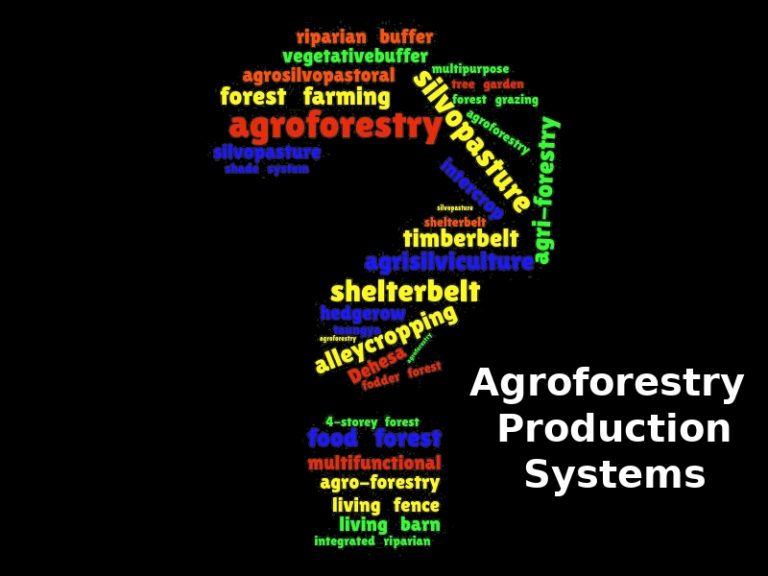Getting Started in Agroforestry: Part 5, Production System
by George Powell
Designing an agroforestry production system to fit your goals can be an excercise in frustration.
Firstly, agroforestry can become complex because of the large number of moving parts. Your focus should therefore, be to design for outcomes, not unnecessary complexity.
Secondly, agroforestry is plagued by a word-storm of terminology. This can leave you feeling great if you are trying to build up your Scrabble vocabulary. But, otherwise it just creates unneccesary confusion for newcomers.
Demystifying Agroforestry

Don’t get hung up on semantics. You don’t need to wrap yourself up in the academic world of classification schemes and terminology.
Focus on three things when designing your agroforestry production system:
- Intent;
- Components; and,
- Interactions
Otherwise, don’t worry about what box some university professor, or government agency says you fall into. At least not until you’re looking for support. Then just tell them what they want to hear.
Intent
Intent, is your purpose, your goals. It is the first step in this exploration of your agroforestry venture. Be clear about why you want to use agroforestry, before you decide how to use agroforestry.
Keeping a written set of goals is better than just a thought process. It will help you revisit and revise them, as needed, through time.
Components
Agroforestry boils down to blending trees and/or shrubs with at least one other production element:
- Livestock;
- Crops between the trees;
- Secondary crops from the trees (i.e. timber plus…, or conservation plus…)
Interactions
With components identified, you now need to map out potential interactions. This is done so you can actively manage them. And, the management emphasis is set by your intent.
For trees and shrubs, generally your biggest concerns are canopy and root architecture. How each spreads will affect microclimate and soil tilth, respectively.
For livestock, foraging preferences are key. You need to understand the relative palatabilty of your crop trees and shrubs, relative to the understory forage crops. This will determine if livestock can be effective at releasing competition from the trees, or cause unacceptable levels of damage.
For your between tree/from the tree crops, you have the greatest flexibility to adjust through time. But you still need to understand their microclimatic needs: how much light, water and other key resources. Because these will be modified, positively or negatively, by trees or livestock.
Read more on evaluating your production setting here.
Interactions Change
It is also very important to understand that the nature of the interactions will vary as an agroforest matures. We can separate agroforestry development into three phases based on the growth and development of the crop trees.
-
In the Herbaceous Phase, tree seedlings are subject to strong, direct competition with understory crops. They are also most are susceptible to direct livestock impacts.
-
Once at the Intermediate Phase, trees have extended their canopy above the herb layer and competition is generally limited to soil-based resources (i.e. water and nutrients).
-
In the Arboreal Phase, mature trees become the dominant elements in the system in terms of both size and resource use. And they control the availability of most resources as well as the understory microclimate.
Management Emphasis
The final step is to bring the intent, components and interactions together. Intent will guide your management emphasis in agroforestry production system design.
For example, you may want to plant hedgerows to provide crop shelter and improve wildlife habitat. With a conservation emphasis, tree and shrub height or root spread may not be as important as shelter or habitat provided.
If, however, your management intent is focused on the row crop, a different selection is appropriate. Lower height shrubs with more contained root systems may be in order. As this will minimize crop interference at the edges.
Subscribe via RSS
